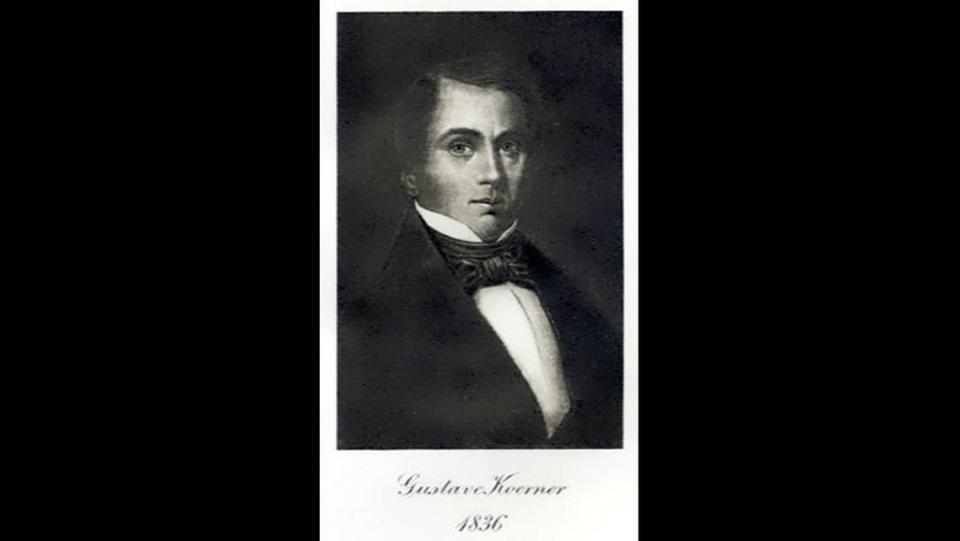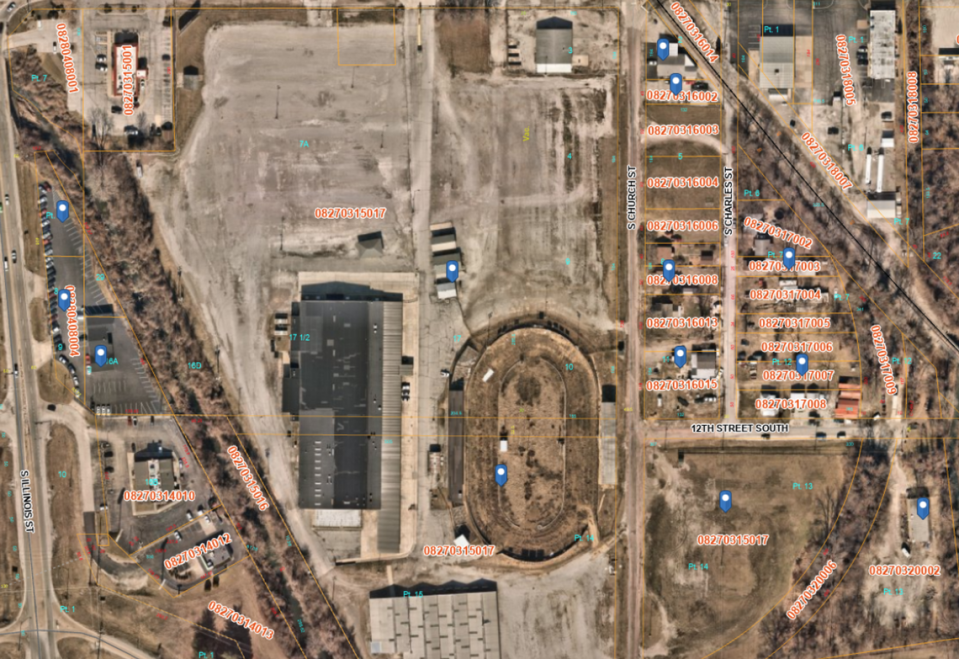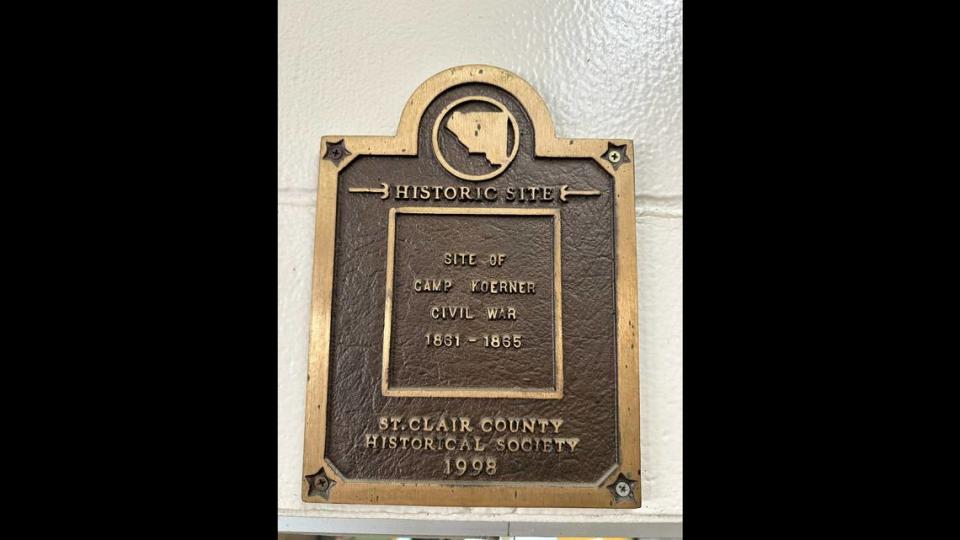Belle-Clair Fairgrounds was once site of Union Army camp during the Civil War
Uniquely is a series of stories that explore the history, landmarks, culture and people that make southwestern Illinois a unique place to live. Got ideas? Send them to newsroom@bnd.com.
The grounds which serve as the site of Belle-Clair Fairgrounds was used very much as it is today 170 years ago, as a place for agricultural fairs and other events.
But just after the start of the Civil War, in 1860, it was the site of a Union Army training camp, named after one of Belleville’s most distinguished citizens.
Camp Koerner — named after Gustave Koerner, a politician and close friend of Abraham Lincoln — was one of 10 different emergency volunteer camps in Illinois, and was picked due to its proximity to a railroad center.
Some history buffs want its story immortalized.
Camp Koerner was originally named after Illinois Governor William Bissell, who died a year prior in 1860, but it was renamed to honor Koerner, the former Illinois lieutenant governor, in May 1861. A close confidant of Abraham Lincoln, Koerner gets credit for helping found the Republican Party and writing its anti-slavery platform ahead of the Great Emancipator’s election.
Ulysses S. Grant visited the Camp Koerner in May 1861 to inspect its troops — most of which had not yet arrived — while he was an assistant to the Illinois Adjutant General.

Koerner, along with a few others, put in a good word for Grant, which helped him get his assistant position that later snowballed into him becoming the commanding general of the U.S. Army and later the 18th president of the United States.
After Grant’s inspection, Camp Koerner grew to around 1,000 soldiers, which would comprise the 22nd Illinois Infantry.
In a Belleville News-Democrat article from 1993, a soldier named Lemuel Adams wrote in his diary that he and other soldiers got to “fixing up our camping place to make it as comfortable as we could.”
John Stacy, a former Civil War camp historian, said the encampment would have been very primitive this early in the war.
“Illinois was unprepared,” Stacy said. “They may have not had uniforms this early, they likely slept in tents or barns and a lot of the food was donated.”
Adams described the weapons given out as “muskets of an ancient vintage.” Repeating rifles, which could fire multiple rounds quickly as opposed to one round at a time, were not yet used in the war.
On one occasion, Adams said the soldiers went into downtown Belleville, where speeches were given, songs were played and the U.S. flag was praised. A neighboring regiment from Alton was in town too, and they displayed a battle flag flown during the Mexican-American War.
Craig Stafford, a security guard and part-time librarian, said the biggest incident caused by the camp was a fight between drunken soldiers in the middle of town on May 29, 1861.
An articlefrom an earlier iteration of the BND, published after the incident, said the group of soldiers went to the “notorious place known as the California House.” They then got into a fight with the next-door owner of a grocery store, who called in his friends and “damaged the heads of two or three of them pretty severely.”
Another BND article from the time labeled the incident as a “serious riot,” described the soldiers as a mob and said the usage of “hatchets, rocks, shotguns and other instruments” led to “the almost total destruction of the … California House.”

The “California House” was located at 301 S Charles St., which was a mile away from Camp Koerner. According to city directory archives from 1860, it used to be a hotel.
Stacy said there was a period of near-conflict between Illinois and Missouri, which Koerner warned the 22nd Illinois Infantry about.
A group of Union soldiers fired into a mob of people in St. Louis. The mob was angry about the capture of Confederate soldiers outside the city. The incident, known as the Camp Jackson Affair, led to heightened tension between the two states.
All along the border of Missouri, Union troops stood guard and prepared for a possible invasion, including troops stationed in Belleville. But the invasion never came, and most of the troops eventually went south to fight in the war.
In October 1879, 14 years after the Civil War ended, a large military reunion was held in Belleville.
Veterans from the War of 1812 to the Civil War came to hear generals William Sherman, Philip Sheridan, John A. Logan and Richard Oglesby speak. The fairgrounds were also utilized to create a mock battle for attendees of the reunion.
Camp Koerner hosted only one regiment during its usage as a training camp, the 22nd Illinois Infantry. After the soldiers were fully trained, prepared and sent off, the site returned to its original and current use as a fairground.
Remembering the history
Jack LeChien, co-chair of the Gustave Koerner house committee, believes the Belle-Clair Fairground should install a descriptive plaque on its grounds to commemorate the history of the location.
“Belleville is 210 years old. I’ve been involved in local preservation for 25 years, and that involves telling the story,” LeChien said. “If no one tells the story, then no one hears the story.
“We hope that the Public Building Commission, which oversees the fairgrounds, would consider a plaque that may be placed at the front door. Some place where people could stop and read it.”
A commemorative plaque for Camp Koerner already is displayed at the fairground, but the new plaque LeChien wants would do more to detail the history of the location.

Jann Severit, director of the Belle-Clair Fairgrounds expo center, said the plaque would be welcomed.
“I think a plaque would be perfect for our building. We’re renovating our buildings, and I think it would be another good addition,” Severit said.
St. Clair County purchased the Belle-Clair Fairgrounds for $2.3 million in 2022. The renovations are intended to revitalize the grounds while maintaining its familiar style and feel. It may also be used in times of crisis, such as future pandemics — as it did during COVID-19 — and temporary shelter during tragedies.
Bill Reichert, architectural and planning advisor for the Public Building Commission in St. Clair, said he doesn’t see any problems with the addition of a new plaque.
LeChien plans to ask the commission for permission to build the new plaque. He said a good bronze plaque could cost between $4,000 and $5,000. Reichert said it may be around $2,000.
Meanwhile, efforts to restore Koerner’s house at 200 Abend St. in Belleville continues into it’s second decade. About $300,000 has been spent on various parts of the house, most it raised through private fundraisers and grants. LeChien said when it’s fully renovated it will be turned into a small educational museum about Koerner’s life, political career and experiences with Lincoln.


